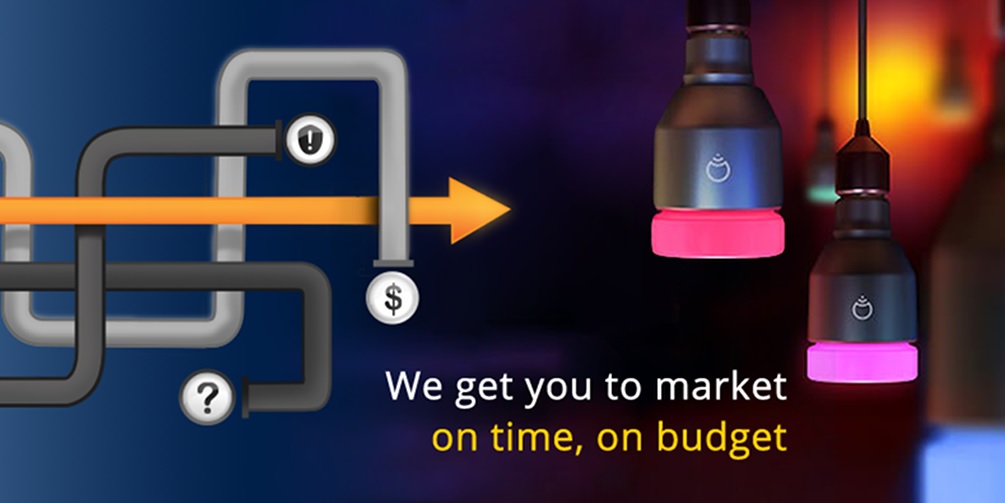embedUR systems is an embedded systems engineering company that specializes in Wi-Fi, Access and IoT/Cloud platform enablement. Based in Silicon Valley, the company has a great history of on time and on budget delivery of embedded software for various network and telecom products. Below is our interview with Rajesh Subramaniam, CEO & Founder of embedUR systems:

Q: Could you tell us something more about embedUR systems?
A: We are an embedded systems engineering company. In layman’s terms that means we specialize in the low-level system software that binds the functions of the equipment or device that users buy the product for in the first place, to the underlying hardware… For the last decade, that has kept us busy doing things like porting firmware from one platform to another for network and telecom equipment vendors who need to upgrade existing products to new platforms and support new functionality. For example adding Wi-Fi support to a cable modem or set-top-box, or VoIP features to a residential gateway so a Service Provider can support triple-play.
 Recommended: Micro Digital: Improving ARM Cortex-M Processor Security Against Hacking And Malware With MPU-Plus
Recommended: Micro Digital: Improving ARM Cortex-M Processor Security Against Hacking And Malware With MPU-Plus
Q: Why do these equipment vendors need you? Can’t they build these devices themselves?
A: Of course they can, but there are numerous reasons why they prefer to outsource it to a company like ours that has special skills. The principal reason is time-to-market. The pressure to get to market on time is intense, and product lifecycles are shrinking as each year passes… meanwhile, the functionality and feature sets of each successive product generation is getting richer and more complex to implement.
Outsourcing embedded systems work, helps them scale their own engineering capacity, and keep their most prized engineers focused on the most strategic products and features. For some it’s just a matter of not having enough engineers with the right skillsets, and taking on a steep learning curve or hiring more, takes too long. For others it’s simply a case of resource allocation. They have the right skillsets, but they’re already over committed. Taking on too many projects is the biggest mistake they can make. But when marketing is driving the agenda, as it should…engineering has to figure out the best way to meet the schedules, no matter how absurd they may seem.
Q: Could you explain the prominent advantages of embedUR’s Universal Carrier Wi-Fi Access platform?
A: I think the best way to answer that, is to explain what led us to create in it in the first place. You see, Service Providers play in two distinct markets: Residential and Business. As Wi-Fi became mainstream in the home, Service Providers had to upgrade all their broadband routers to add Wi-Fi.
All these devices have four things in common: 1) Device cost is critical – that means multiple functions must be packed into one device. 2) They are some kind of a broadband device with Wi-Fi added on. So there are many variants – cable, DSL, fiber, with or without voice features, residential gateway, Set-top box, and so on. 3) The Wi-Fi feature set is basic: security is crude, even the radios are puny compared to enterprise gear. 4) The Wi-Fi is essentially unmanaged – Although the router itself is managed, Service Providers are mostly blind to the health of the Wi-Fi radio and the client experience. This lack of visibility, is the cause of numerous support calls that could be avoided with more intelligent equipment.
Now to the second market. Enterprise-grade Wi-Fi is the exact opposite. Businesses need Wi-Fi coverage everywhere, not just one AP at the edge of the network. And it must have sophisticated features, such as seamless roaming from one AP to the next, advanced security, service assurance features to mitigate interference, and the list goes on. But this high-end equipment is far too expensive for residential applications, and besides a single-function AP is in the wrong form-factor anyway.
So, to play in both markets, Service Providers need two completely different solutions. Since we have the skills to build a complete Wi-Fi system from scratch, and can port Wi-Fi software to any type of broadband CPE, we were in a unique position to fully address the price, performance and functionality requirements of both markets with just one solution. The Universal Carrier Wi-Fi platform gives Service Providers the visibility and control they have never had before, and dramatically cuts the cost of operations and support.
 Recommended: DATABASICS Delivers Multi-Platform, Cloud-Based, Flexible Expense And Time Management Software
Recommended: DATABASICS Delivers Multi-Platform, Cloud-Based, Flexible Expense And Time Management Software
Q: If your heritage is Wi-Fi and Access, how did you get involved in IoT?
A: We actually began building an IoT aggregation architecture back in 2010. Though, at the time, we had no idea, that was what we were doing! We were trying to solve an entirely different problem, related to service assurance for large scale Wi-Fi networks. As I mentioned earlier… enterprise class WLAN gear, has features to mitigate interference and manage loading… some is automatic and some requires manual intervention, based on spectrum and performance data presented to the network admin’s management console.
But residential gear has none of this. We had an agent to collect all the radio and client data from and AP or Wi-Fi enabled broadband, and we had developed algorithms to dynamically optimize the device’s configuration without user intervention. But the challenge was how to collect all that data and pass it to analytics engines in the cloud, so you could do this cost-effectively on a massive scale. It took us four years to find the optimum combination of protocols and messaging components, but we finally cracked it. It turns out, this challenge of collecting massive amounts of data, aggregating it in the cloud and figuring out what it means, is precisely the same in IoT, only the scaling issues are more intense.
Q: What are your plans for keeping embedUR systems on the forefront of IoT innovation?
A: IoT has many more unsolved problems we think we can tackle. For example: In the case of our Wi-Fi service assurance solution, the entire dataset is all related to one thing – the Wi-Fi user experience. But in IoT, each device is in a category of its own… the datasets for a Smart Meter, a Refrigerator and a Vehicle are not related – so how can you build algorithms to figure out what the data means? Even more fundamental than that, how do you collect the data in a uniform way, without having to create a unique agent for each device (we think we’ve solved that one), and finally how should you organize that data in the cloud? It is thorny problems like these that inspire us to do our best work!
Activate Social Media:


